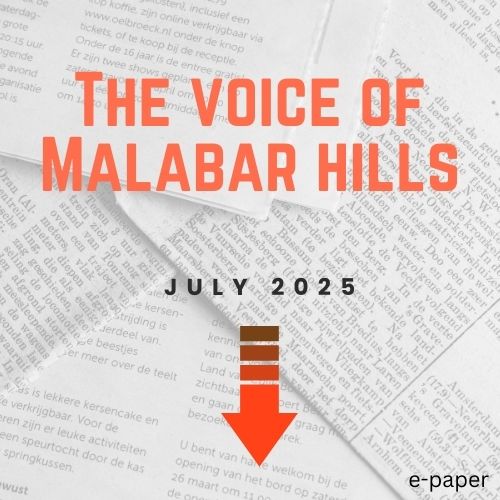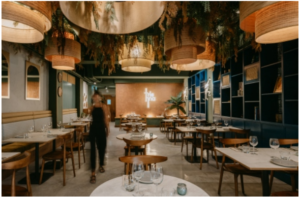
In this classic, instantly recognizable view for anyone even vaguely familiar with the city, the height of Malabar Hill offers a lovely vantage point to look across the island’s semi-circular south-western bay towards the fortified town of Bombay as it was in the year 1851. Rural bungalows dotted this eastern slope of Malabar Hill, with carriage roads and picket fences interspersed amongst various types of palm trees. A (now-defunct) private Tower of Silence can be seen in the bottom left, which is, in all probability, the Readymoney Tower off Ridge Road.
For what is easy to mistake as today’s Chowpatty, the beach seen in the middle-left actually went all the way back to Marine Lines, before
a reclamation project in the 1910s brought about Kennedy Sea Face, today’s Marine Drive. The curved shape of the beach was broadly maintained though. Known in the British era as Back Bay, the beach was a docking point for many hundreds of years for pilgrims coming to visit the sacred site of the ancient Banganga temple – tank complex on Malabar Hill, built by the Shilahara dynasty sometime between the 10th and 13th centuries A.D., who would take a steep pedestrian pathway up the hill, akin to climbing a ladder or a seedee (later
anglicized as “siri”); that millennium-old route is today, no doubt, known to us as Siri Road.
The northern part of this beach stretch (hidden from view here) was at the time of creation of this artwork informally known as ‘Lakdi
Bunder’, as firewood for funeral pyres in the nearby Chandanwadi (Hindu cremation grounds, which were virtually on the beach then) was transported and piled high onto the beach during dry weather. The middle distance scenery is capped off by a typical seemingly-idyllic tranquil summer’s day with a variety of docked and sailing boats, some fishing in the shallows, a place that could be mistaken for any one of the innumerable fishing villages along the northern Konkan coast.
Dongri / Mazagaon Hill (at the time known as Nowroji Hill) can be seen in the distance on the left, sloping into a part of the erstwhile
“native town” (Masjid Bunder, Pydhonie, etc.), and leading into Fort on the right. Elephanta Island is the lone landmass seen in the distant left, followed by the seemingly disparate Greater and Lower Caranjah (now Uran Island.) The hills of mainland Maharashtra are in the far distance. All of this landscape was on the verge of drastic change; within virtually the next two years, before railways were to become a reality in Bombay in 1853, embankment constructions across Bombay as well as the demolition of smaller hills in order to unite the
islands by railroad tracks would radically change it’s landscape forever, offering us this as one last look of a rural and relatively pristine place in time.
(Picture and article by Mrinal Kapadia, resident of Cumballa Hill, he is a collector and researcher, and can be reached on mrinal.kapadia@gmail.com or via Instagram on @mrinal.kapadia)





